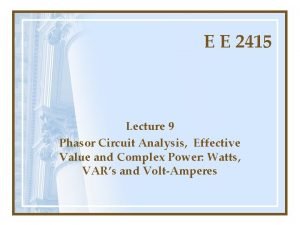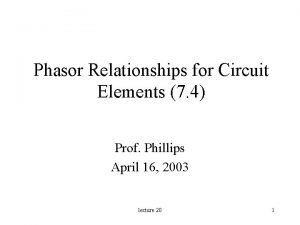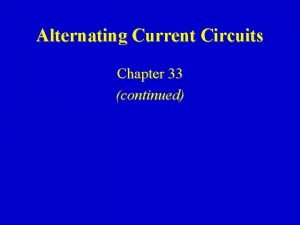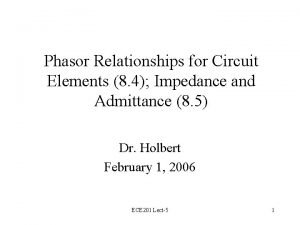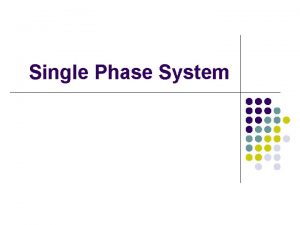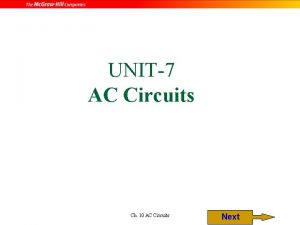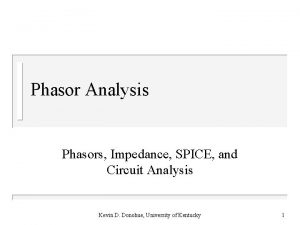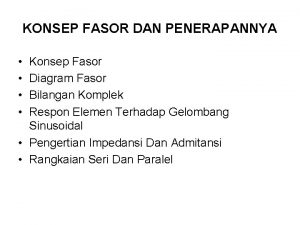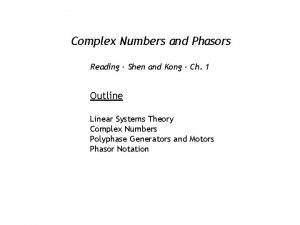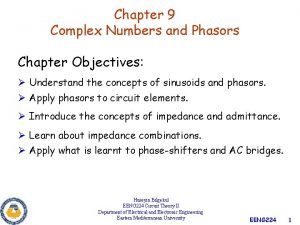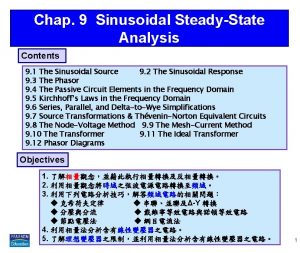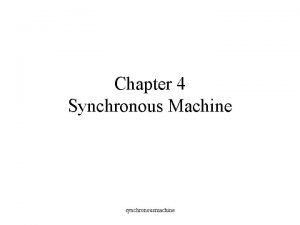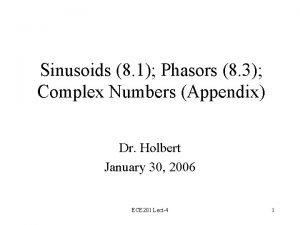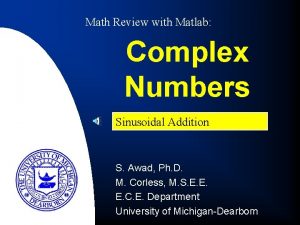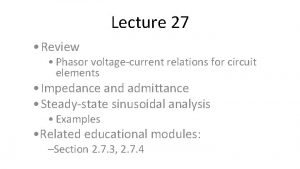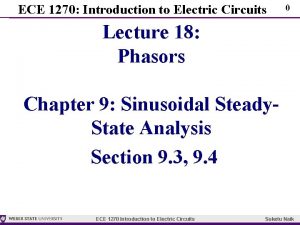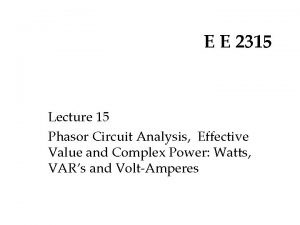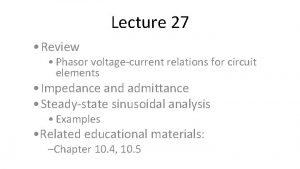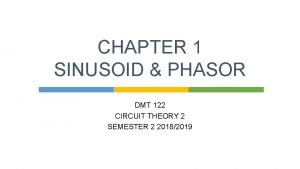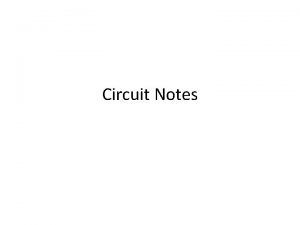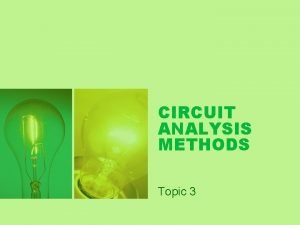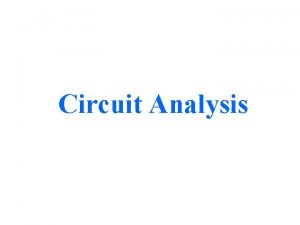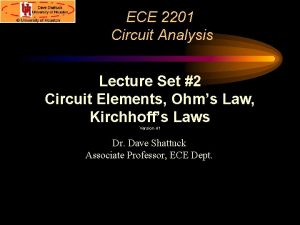E E 2415 Lecture 9 Phasor Circuit Analysis





















- Slides: 21

E E 2415 Lecture 9 Phasor Circuit Analysis, Effective Value and Complex Power: Watts, VAR’s and Volt-Amperes

Effective Value of a Sinusoid (1/3) Average Power:

Effective Value of a Sinusoid (2/3) In our example: Also: The effective value is also called the Root Mean Square value or rms value.

Effective Value of a Sinusoid (3/3)

R-C Circuit Example (1/6) Capacitive Reactance

R-C Circuit Example (2/6) Using rms phasor for voltage source.

R-C Circuit Example (3/6) Calculate Real Power: And Reactive Power: Apparent power is the product of voltage and current of the source. Also:

R-C Circuit Example (4/6) Power Factor is the ratio of real power to apparent power: Power Factor is also the Cosine of the angle between the load voltage and the load current: If the load current leads the load voltage, the power factor is leading; if it lags the load voltage, the power factor is lagging.

R-C Circuit Example (5/6) Phasor Diagram of Voltage and Current leads voltage.

R-C Circuit Example (6/6) The Power Triangle showing leading power factor.

Calculating Complex Power (1/2)

Calculating Complex Power (2/2) From now on, we use the above method to calculate complex power.

Lagging Power Factor Example (1/4)

Lagging Power Factor Example (2/4) Calculate complex power directly:

Lagging Power Factor Example (3/4) Power Factor: Power Factor is Lagging Phasor Diagram of Voltage and Current

Lagging Power Factor Example (4/4) Power Triangle for lagging Power Factor

Phasor Power Example (1/4)

Phasor Power Example (2/4)

Phasor Power Example (3/4) Capacitor VAR’s:

Phasor Power Example (4/4)

Impedance and Admittance Impedance Admittance Conductance Susceptance
 Phasor circuit analysis example
Phasor circuit analysis example Phasor relationships for circuit elements
Phasor relationships for circuit elements Alternating circuit
Alternating circuit Impedence triangle
Impedence triangle Eli the ice man
Eli the ice man Phasor diagram of pure resistive circuit
Phasor diagram of pure resistive circuit Complex power formula
Complex power formula Phasor domain analysis
Phasor domain analysis 01:640:244 lecture notes - lecture 15: plat, idah, farad
01:640:244 lecture notes - lecture 15: plat, idah, farad Phasor diagram
Phasor diagram Phasor notation
Phasor notation Apa yang dimaksud dengan diagram fasor
Apa yang dimaksud dengan diagram fasor Adding polar form
Adding polar form Complex number phasor
Complex number phasor Phasor representation
Phasor representation Phasor diagram of synchronous motor
Phasor diagram of synchronous motor Instantaneous magnitude
Instantaneous magnitude Complex number magnitude
Complex number magnitude Complex sinusoid matlab
Complex sinusoid matlab Phasor adder
Phasor adder Phasor notation
Phasor notation Compute the equivalent resistance of the network
Compute the equivalent resistance of the network
